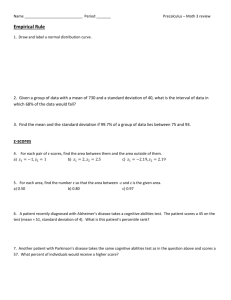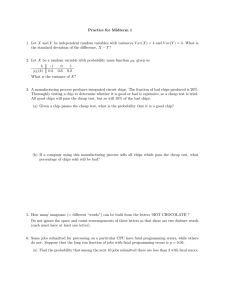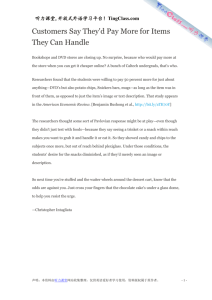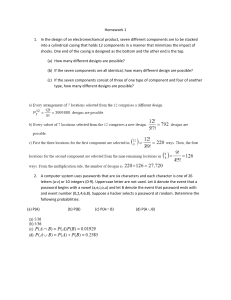I. Estimation:
advertisement
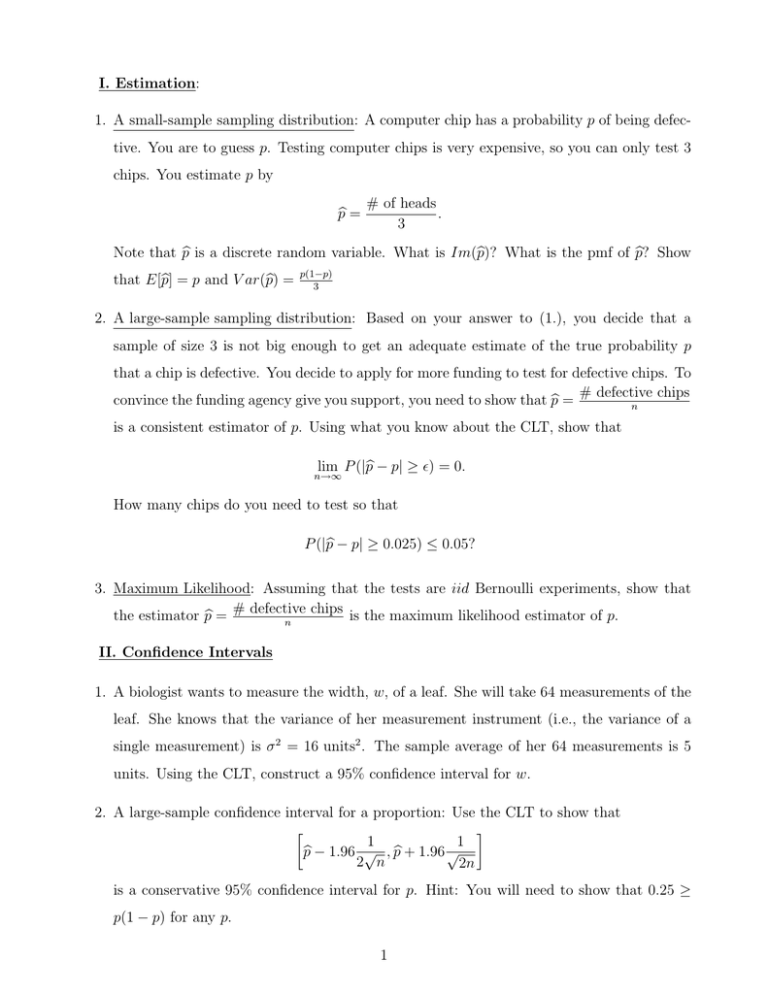
I. Estimation: 1. A small-sample sampling distribution: A computer chip has a probability p of being defective. You are to guess p. Testing computer chips is very expensive, so you can only test 3 chips. You estimate p by pb = # of heads . 3 Note that pb is a discrete random variable. What is Im(b p)? What is the pmf of pb? Show that E[b p] = p and V ar(b p) = p(1−p) 3 2. A large-sample sampling distribution: Based on your answer to (1.), you decide that a sample of size 3 is not big enough to get an adequate estimate of the true probability p that a chip is defective. You decide to apply for more funding to test for defective chips. To # defective chips convince the funding agency give you support, you need to show that pb = n is a consistent estimator of p. Using what you know about the CLT, show that lim P (|b p − p| ≥ ) = 0. n→∞ How many chips do you need to test so that P (|b p − p| ≥ 0.025) ≤ 0.05? 3. Maximum Likelihood: Assuming that the tests are iid Bernoulli experiments, show that # defective chips is the maximum likelihood estimator of p. the estimator pb = n II. Confidence Intervals 1. A biologist wants to measure the width, w, of a leaf. She will take 64 measurements of the leaf. She knows that the variance of her measurement instrument (i.e., the variance of a single measurement) is σ 2 = 16 units2 . The sample average of her 64 measurements is 5 units. Using the CLT, construct a 95% confidence interval for w. 2. A large-sample confidence interval for a proportion: Use the CLT to show that 1 1 pb − 1.96 √ , pb + 1.96 √ 2 n 2n is a conservative 95% confidence interval for p. Hint: You will need to show that 0.25 ≥ p(1 − p) for any p. 1 III. Hypothesis Tests 1. A randomized experiment: Jackie conducts an experiment to compare a new procedure to the standard procedure of manufacturing computer chips, in hope that the new procedure will lead to fewer defective chips. Jackie has 10 batches of parts. She randomly picks 5 batches and manufactures 5 chips from the 5 selected batches using the new procedure. She uses the other 5 batches to manufacture 5 chips using the standard procedure. She counts the number of defective chips arising from each of the two procedures. – In how many ways can Jackie put the 10 chips into two groups, each of size 5? (The order of selection does not matter. Each batch of parts is identified with a unique number). – If the new procedure and the standard procedure are actually identical (the new one is no better than the old one, and vice versa), then a batch of parts will lead to either a defective chip or a good chip, regardless of which procedure is used to manufacture the chip. Suppose that after Jackie conducts the experiment, she finds that the total number of defective chips is D = 6. Let X be the number of defective chips arising from the new procedure. If the two procedures are identical, what is P (X = k | D = 6), for k = 1, 2, 3, 4, 5? Write P (X = k | D = 6) as a function of k. – Jackie observes X = 1. Compute P (X = 1 | D = 6). Based on this, does it seem plausible that the two procedures are identical? Does Jackie’s experiment furnish evidence that the new procedure leads to fewer defective chips? 2
